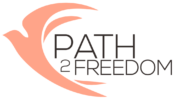THE FACTS
“HUMAN TRAFFICKING IS MODERN-DAY SLAVERY AND INVOLVES THE USE OF FORCE, FRAUD, OR COERCION TO OBTAIN SOME TYPE OF LABOR OR COMMERCIAL SEX ACT.”
2022-2023 STATISTICS
The total number of reports accepted by the Florida Abuse Hotline alleging human trafficking
78.37% of which involved children
89.69% were coded as Commercial Sexual Exploitation of Children (CSEC)
(10.31%) were for Labor Trafficking
MORE TRAFFICKING STATISTICS
- Worldwide, there are 40.3 million victims trapped in Human Trafficking
- In 2023 there were 396 identified Commercial Sexual Exploitation of Children (CSEC) victims, but only 33 safe beds available per Florida DCF
- 22,326 TRAFFICKING VICTIMS & SURVIVORS IDENTIFIED in 2019 14,597 of those were victims and survivors of sex trafficking
- 4,384 TRAFFICKERS IDENTIFIED in 2019
- 4.8 million people are involved in forced sexual exploitation worldwide, with more than 1 million of those victims being children under the age of 18 years.
- US leads all other nations in consumption
- 1 in 4 victims are children
- 7 in 10 victims are women
- According to the U.S. Department of Justice, the average age a child first becomes a victim of sex trafficking is between 12-14.
- It is projected that between 60% and 70% of trafficked children in the U.S. come from child social services or the foster care system
- 84% OF THOSE SOLD IN SEX SLAVERY WERE sexually ABUSED AS CHILDREN
- It is estimated that every two minutes around the world, a life is being bought and sold.
- Between 60% and 70% of trafficked children in the U.S. come from child social services or the foster care system.
- Human trafficking is a $200 billion global industry. It is the world’s fastest growing criminal enterprise.
- According to the U.S. Department of Justice, the average age a child first becomes a victim of sex trafficking is between 12-14
- 90.8% of trafficking survivors reported being arrested whereas we estimate fewer than 10% of buyers are arrested.
- 92% of victims are physically assaulted
Trafficking statistics change often. This page was updated on 12/05/23.
Statistics sourced from The US Institute Against Human Trafficking, The Polaris Project, and Florida Department of Children and Families Annual Human Trafficking Report State Fiscal Year 2018-2019


